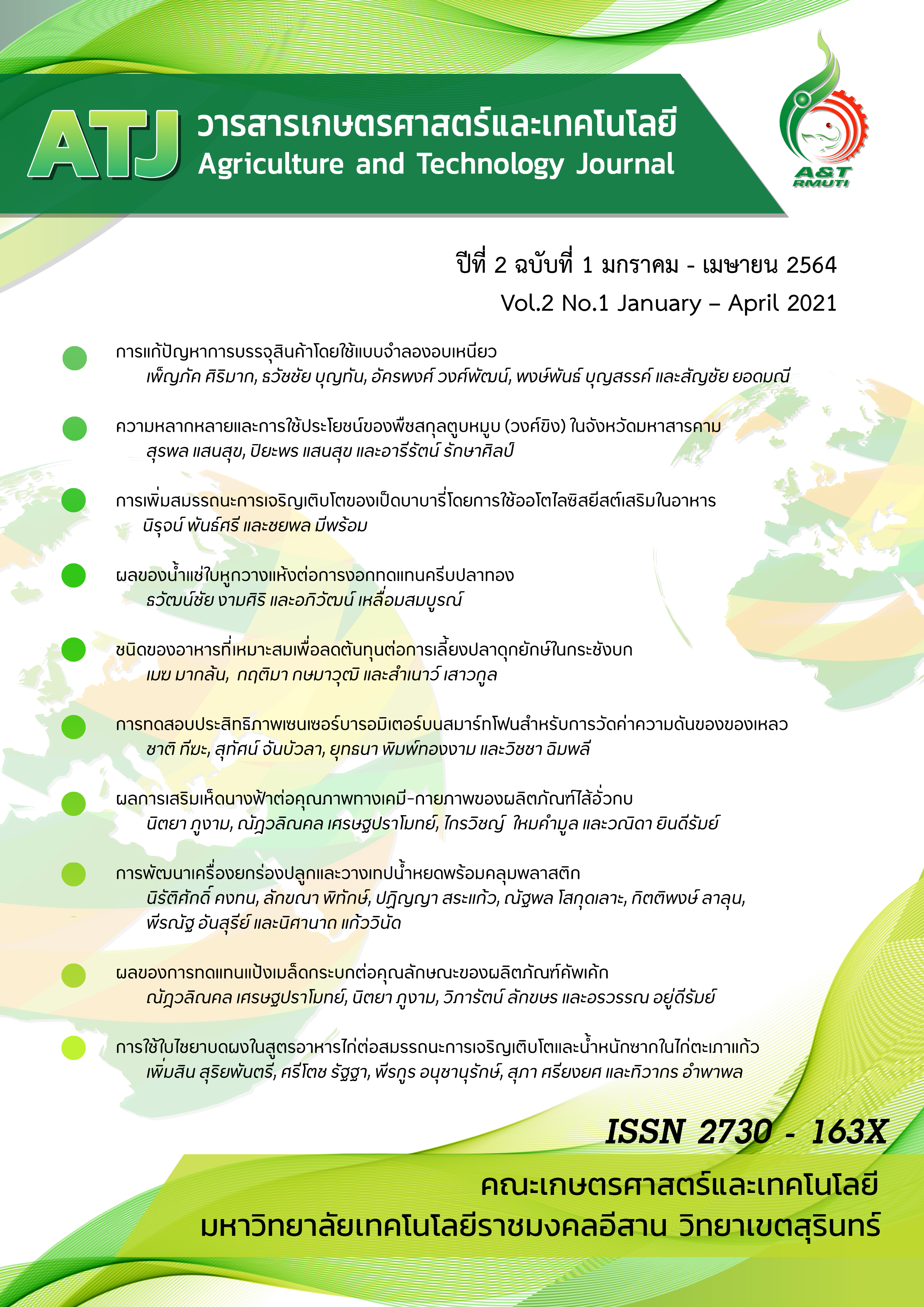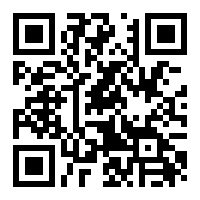การทดสอบประสิทธิภาพเซนเซอร์บารอมิเตอร์บนสมาร์ทโฟนสำหรับการวัดค่าความดันของของเหลว
คำสำคัญ:
การทดสอบประสิทธิภาพ, เซนเซอร์บารอมิเตอร์, สมาร์ทโฟน, ความดันของของเหลวบทคัดย่อ
ในบทความนี้ เป็นการนำเสนอผลการทดสอบประสิทธิภาพเซนเซอร์บารอมิเตอร์ และแอปพลิเคชันวัดค่าความดันบน iPhone 8 (แอปพลิเคชัน Barometer Plus และ Bar–o–Meter–Altimeter & Barometer) และ Samsung Galaxy Note 9 (แอปพลิเคชัน Barometer Plus และ Physics Toolbox Sensor Suited) ในการวัดค่าความดันของน้ำ (W=1.000x103 kg/m3) และน้ำสไปร์ท (S=1.067x103kg/m3) ผลการวิจัย พบว่า เซนเซอร์บารอมิเตอร์และแอปพลิเคชันวัดค่าความดันบน iPhone 8 วัดค่าความดันของน้ำสไปร์ทได้แม่นยำกว่าน้ำ ในขณะที่เซนเซอร์บารอมิเตอร์บน Samsung Galaxy Note 9วัดค่าความดันของน้ำได้แม่นยำกว่าน้ำสไปร์ท โดยค่าความดันที่วัดได้ทั้ง iPhone 8 และ Samsung Galaxy Note 9 มีเปอร์เซนต์ค่าความคลาดเคลื่อนในการวัดเทียบกับทฤษฎีมีค่าน้อยกว่า 1 จึงสรุปได้ว่า เซนเซอร์บารอมิเตอร์และ
แอปพลิเคชันวัดค่าความดันบน iPhone 8 และ Samsung Galaxy Note 9 มีประสิทธิภาพและความแม่นยำสูงในการวัดค่าความดันของของเหลว เซนเซอร์บารอมิเตอร์บนสมาร์ทโฟนทั้งในระบบปฏิบัติการ iOS และ Android นี้ สามารถนำไปประยุกต์ใช้ในการวัดค่าความดันของของเหลวที่ไหลในท่อที่มีขนาดเส้นผ่านศูนย์กลางต่าง ๆ กัน เพื่อหาค่าแรงดันของของเหลวต่อพื้นที่ภาคตัดขวางต่าง ๆ ได้
เอกสารอ้างอิง
Chen C.Y., Chen Y.H., Lin C.F., Weng C.J., and Chien H.C. (2014). A review of ubiquitous mobile sensing based on smartphones. International Journal of Automation and Smart Technology. 4(1): 13–19.
Countryman C.L. (2014). Familiarizing students with the basics of a smartphone's internal sensors. The Physics Teacher. 52: 557–559.
Daponte P., Vito De L., Picariello F. and Riccio M. (2013). State of the art and future developments of measurement applications on smartphones. Measurement. 46(9): 3291–3307.
González M.Á., González Manuel Á., Martín M.E., Llamas C., Martínez Ó., Vegas J., Herguedas M. and Hernández, C. (2015). Teaching and learning physics with smartphones. Journal of Cases on Information Technology. 17(1): 31–50.
Kuhn J. and Vogt P. (2013). Applications and examples of experiments with mobile phones and smartphones in physics lessons. Frontiers in Sensors. 1(4): 67–73.
Macchia S. (2016). Analyzing Stevin’s law with the smartphone barometer. The Physics Teacher. 54: 373.
Monteiro M. and Martí A.C. (2017). Using smartphone pressure sensors to measure vertical velocities of elevators, stairways, and drones. Physics Education. 52(1): 015010.
Monteiro M., Vogt P., Stari C., Cabeza C. and Marti A.C. (2016). Exploring the atmosphere using smartphones. The Physics Teacher. 54: 308–309.
Oprea M. and Miron C. (2014). Mobile phones in the modern teaching of physics. Romanian Reports in Physics. 66(4): 1236–1252.
Sans J.A., Manjón F.J., Cuenca-Gotor V., Giménez–Valentín M.H., Salinas I., Barreiro J.J., Monsoriu J.A. and Gomez-Tejedor J.A. (2015). Smartphone: a new device for teaching Physics. 1st International Conference on Higher Education Advances, HEAd’15, Universitat Politècnica de València, València, 2015, DOI: http://dx.doi.org/10.4995/HEAd15.2015.332
Vanini S., Faraci F., Ferrari A. and Giordano S. (2016). Using barometric pressure data to recognize vertical displacement activities on smartphones. Computer Communications. 87: 37–48.
Vieyra R.E., Vieyra C., and Macchia S. (2017). Kitchen physics: Lessons in fluid pressure and error analysis. The Physics Teacher. 55: 87–90.
Vieyra R., Vieyra C., Jeanjacquot P., Marti A. and Monteiro M. (2015). Turn your smartphone into a science laboratory. The Science Teacher. 32–40.
Vogt P. and Kuhn J. (2014). Acceleration sensors of smartphones: Possibilities and examples of experiments for application in physics lessons. Frontiers in Sensors. 2: 1–9.
ดาวน์โหลด
เผยแพร่แล้ว
เวอร์ชัน
- 08-02-2024 (3)
- 26-04-2021 (2)
- 26-04-2021 (1)
รูปแบบการอ้างอิง
ฉบับ
ประเภทบทความ
สัญญาอนุญาต
ลิขสิทธิ์ (c) 2021 วารสารเกษตรศาสตร์และเทคโนโลยี

อนุญาตภายใต้เงื่อนไข Creative Commons Attribution-NonCommercial-NoDerivatives 4.0 International License.
เนื้อหาและข้อมูลในบทความที่ลงตีพิมพ์ในวารสารทดสอบระบบ ThaiJo2 ถือเป็นข้อคิดเห็นและความรับผิดชอบของผู้เขียนบทความโดยตรงซึ่งกองบรรณาธิการวารสาร ไม่จำเป็นต้องเห็นด้วย หรือร่วมรับผิดชอบใดๆ
บทความ ข้อมูล เนื่อหา รูปภาพ ฯลฯ ที่ได้รับการดีพิมพ์ในวารสารทดสอบระบบ ThaiJo2 ถือเป็นลิขสิทธิ์ของวารสารทดสอบระบบ ThaiJo2 หากบุคคลหรือหน่วยงานใดต้องการนำทั้งหมดหรือส่วนหนึ่งส่วนใดไปเผยแพร่หรือเพื่อกระทำการใดๆ จะต้องได้รับอนุญาตเป็นลายลักอักษรณ์จากวารสารทดสอบระบบ ThaiJo2 ก่อนเท่านั้น







